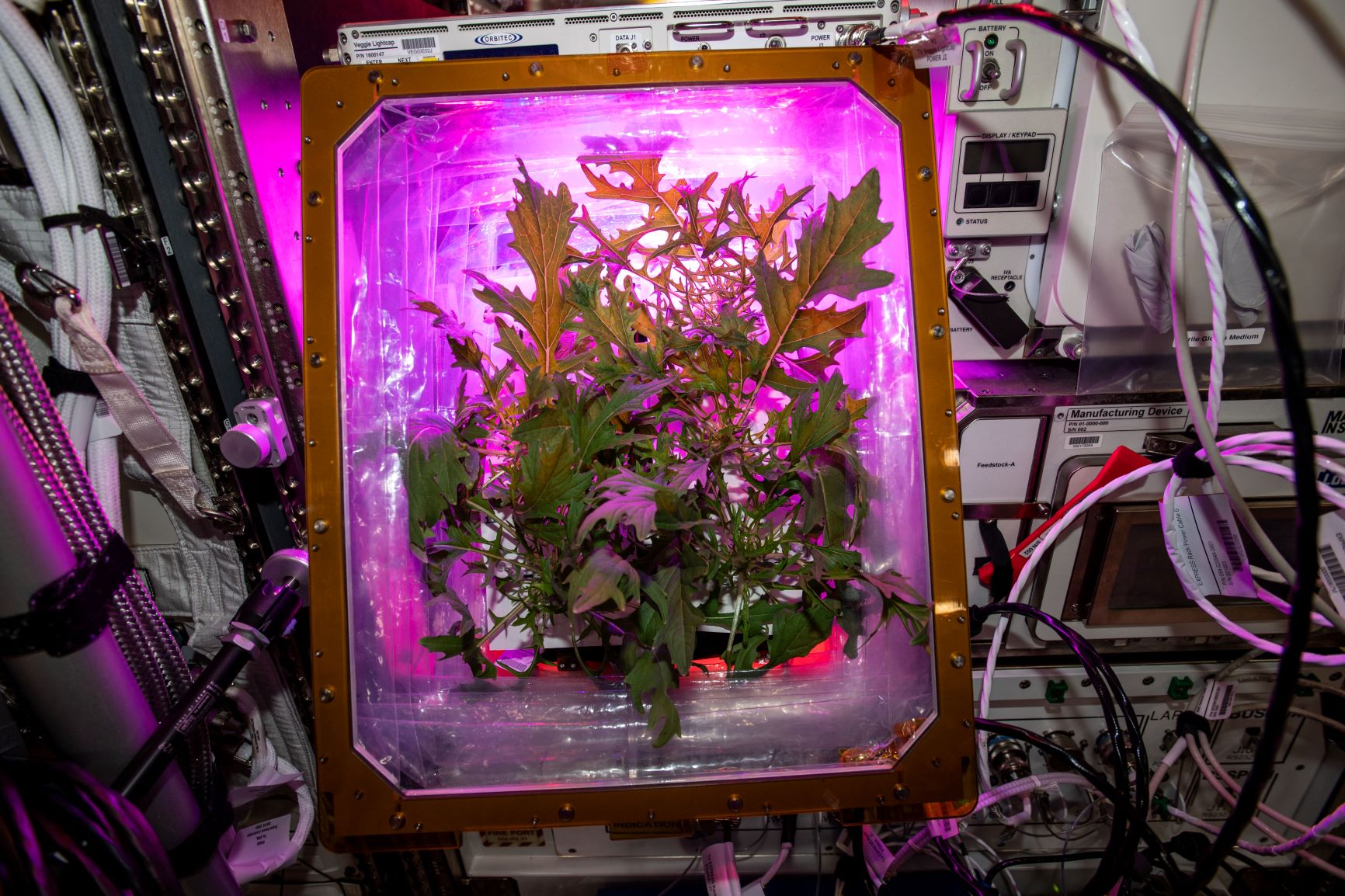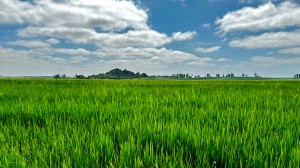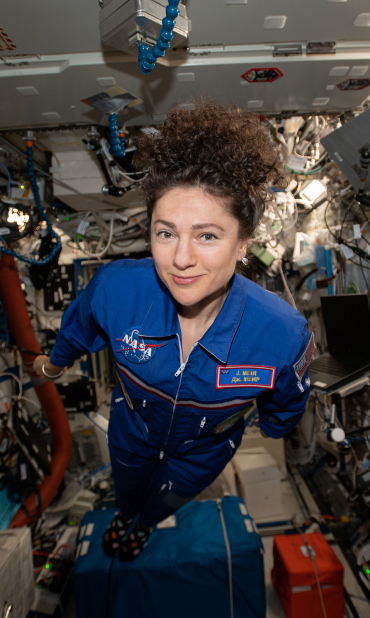
Credit: NASA
It’s a maxim drilled into us at a young age: “Always eat your veggies!” For astronauts on the International Space Station, heeding this well-known advice is both essential and challenging. Health and nutrition are vital to mission objectives, but how do you ensure astronauts get fresh produce to eat when living off the planet?
One solution involves astronauts growing vegetables for themselves. On the station, plants such as the mizuna mustard greens seen above are grown under LED lighting and watered in plant “pillows” — special bags that contain seed and fertilizer. These plants and their pillows are housed in a unique botany facility called the Vegetable Production System, or Veggie.
Growing fresh vegetables in space offers benefits beyond providing a source of nutrition to crew members, explained Dr. Gioia Massa, project scientist at NASA’s Kennedy Space Center in Florida. Here on Earth, pandemic-induced isolation has led people to take up baking or gardening. Could developing a space-faring green thumb also help astronauts ease their sense of confinement and isolation? NASA’s Human Research Program, or HRP, has given Massa and her team of researchers the task of finding out.
To learn more, Massa’s group is asking astronauts who currently cultivate vegetables on the station to each complete a survey about their space-gardening experiences. For example, crew members who grow mizuna mustards take the survey two to three times for the month-long growth cycle of the plant.
Questions on the survey help gauge how space-gardening affects astronauts’ moods. For example: Was gardening engaging, demanding, or meaningful? Did it impact the passage of time, performance of mission tasks, or relationships with crew members? Did gardening enhance their connection to Earth, desire to harvest or consume the plants, or food consumption in general? How effective was gardening as a source of sensory stimulation for sight, touch, smell, and taste?
When the vegetables are ready to eat, the astronauts also complete a sensory assessment. They rate the flavor, color, appearance, aroma, texture, and taste of the produce to see whether the labor over their veggies proved fruitful as a supplement to prepackaged space food.
Thus far, seven astronauts have completed the survey. Massa hopes to survey a total of 24 astronauts before the study is complete.
Initial results show that some participants loved working with the plants during their leisure time, spending many hours caring for them during their mission, while others preferred different activities. Despite the variability, no one viewed their work with the plants as meaningless, and all valued the utility of growing plants in space.
Astronauts’ feedback will help NASA better design food systems for future space missions. “We are learning what crops to grow to help supplement the diet, which activities should be automated or remotely operated, and which should have options for crew involvement,” explained Massa. “Different growth systems and different space missions will have different solutions to these questions.”
HRP, along with the Biological and Physical Sciences (BPS) Division of NASA’s Science Mission Directorate at NASA Headquarters in Washington, provides funding for Veggie and related investigations.
______
NASA’s Human Research Program, or HRP, pursues the best methods and technologies to support safe, productive human space travel. Through science conducted in laboratories, ground-based analogs, and the International Space Station, HRP scrutinizes how spaceflight affects human bodies and behaviors. Such research drives HRP’s quest to innovate ways that keep astronauts healthy and mission-ready as space travel expands to the Moon, Mars, and beyond.































